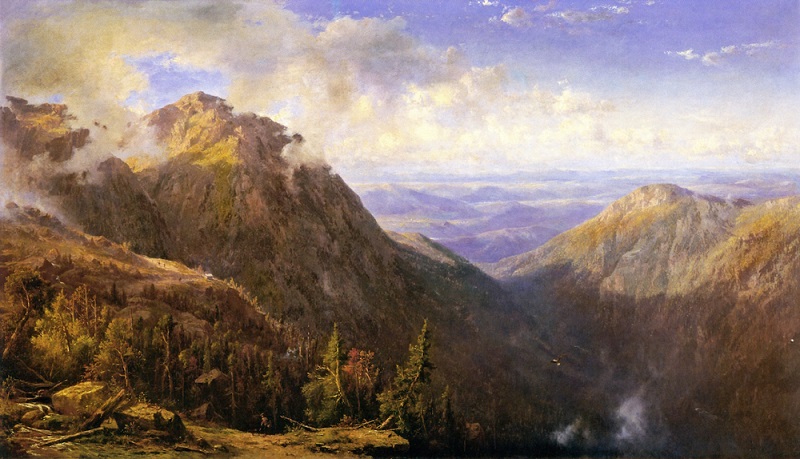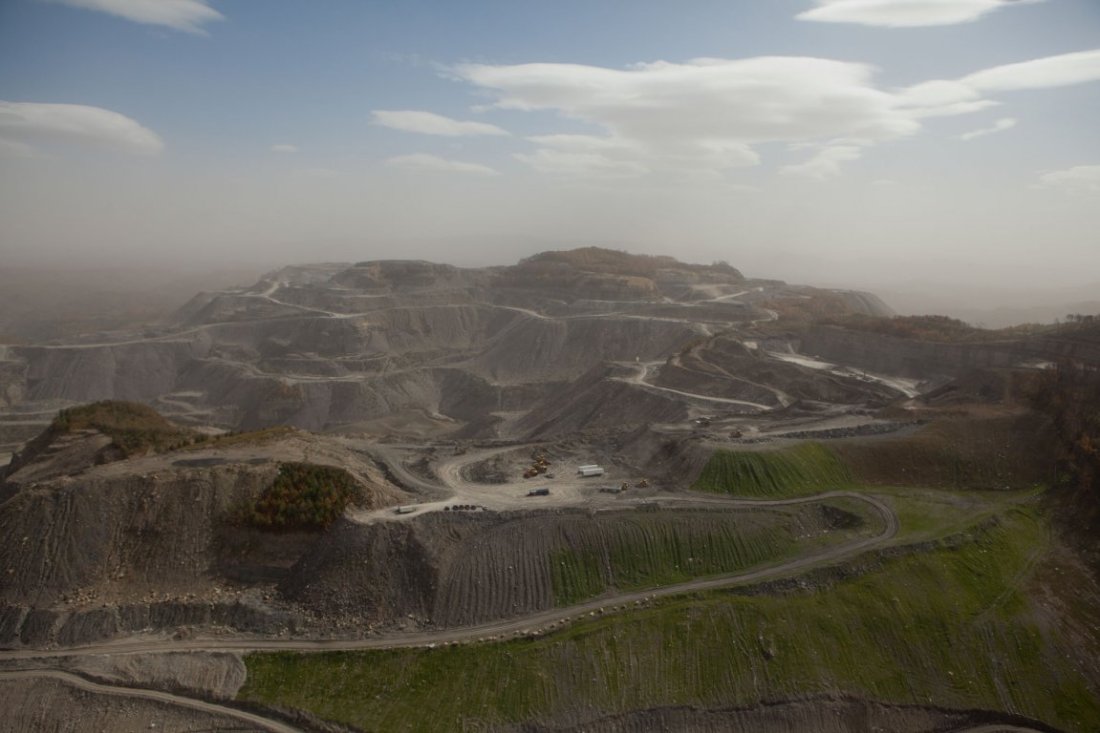The idea for Human Accumulations arose when photographer Alan Gignoux and I reviewed photographs of his documenting the environmental and social effects of mountaintop-removal coal mining in western Virginia. I was struck by the irony that the framing and composition of some of his images of the scarred mountains of Appalachia reminded me of nineteenth-century romantic landscape painting. Alan then told me about his ancestor, Hudson River School painter Regis Gignoux, whose works include a large landscape depicting the White Mountains region of New Hampshire, part of the Northern section of the Appalachian range, which runs down the East Coast of the USA.

This painting shows tree-covered mountains stretching into the blue distance with no sign of human activity except for a man in the foreground walking with a dog at his side, possibly in the direction of a cottage in the distance, and two horsemen just visible beyond the cottage. Regis’ painting follows certain nineteenth-century conventions: the view is most likely a composite of sketches made on site, rather than an accurate representation of a specific scene. Equally, the figures and indeed the cottage were probably inserted into the landscape by the artist in order to introduce the idea of settlement of the land. The eagle flying towards the valley between the ridges would have been recognised at the time as a symbol of the expansion of the young nation across North America towards the West.
Regis’s painting presents a vision of individual homesteaders clearing and settling the land until European civilisation has been brought to the wild, tree-covered ridges of New Hampshire and beyond. To European settlers on the East Coast, this magnificent view of the White Mountains was both a stirring depiction of the natural sublime and a rallying cry in support of nation-building; significantly, it did not in any way acknowledge the presence of an indigenous population.

When viewed together, Alan’s photo and Regis’s painting of the same range of mountains, at two moments in time, appear to present contrasting views of humankind’s relationship with nature. Yet, as we have already seen, the nineteenth-century painting contains the seeds of the idea of expansion and development that would eventually lead to colonisation and exploitation of the land. However, interestingly, it was paintings such as this one that persuaded an influential group of nineteenth-century Americans that landscapes, such as the White Mountains, were worth protecting for posterity.
Regis’s nineteenth-century painting represents a part of the Appalachian range in New Hampshire which is today included in the White Mountains National Forest, a protected area. The view, which is possibly intended to represent the Presidential Range, is the same today as it was in Regis’s day; for a period in between, however, the wooded slopes were ravaged by logging until the Weeks Act (1911) put a stop to the environmental devastation. Alan’s present day photograph of the Appalachian range in western Virginia shows a region unprotected by conservation laws. It is clear that in this instance the fate of the landscape has been closely tied to whether it is protected by legislation or not; whether a landscape is selected for protection may, it seems, be related to whether it signifies something of spiritual importance to people.
∗∗∗∗∗
Our Journey
A prominent member of the Hudson River School in his day, Regis travelled the length of the East Coast during the mid-nineteenth century, producing sketches that would later be used as the basis for oil paintings representing the beauty, variety, distinctiveness and impressive scale of the newly settled American landscape. Curious to discover how other places had been changed by human intervention since then, Alan and I decided to follow in his ancestor’s footsteps.
In the spring of 2017 we made visits to five places painted by Regis: Niagara Falls, the White Mountains, Lake George, Peekskill on the Hudson and Mammoth Cave. In 2018 we plan to revisit all these places to start work on a contemporary photographic response to Regis’s nineteenth-century paintings. We will share our research into Regis’s life and work and Alan’s creative development in this blog.


